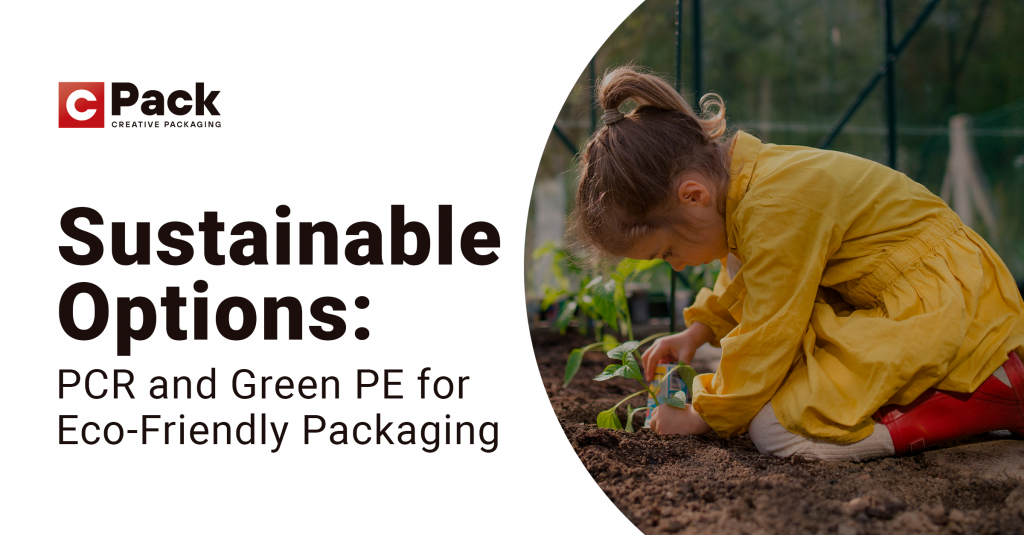
Sustainable Options: PCR and Green PE for Eco-Friendly Packaging
In a world increasingly aware of environmental issues, the demand for eco-friendly packaging is on the rise. Consumers are seeking sustainable options that minimize their carbon footprint. One such solution lies in the use of PCR (Post-Consumer Recycled) materials and Green PE (Polyethylene). Let’s explore how these choices contribute to eco-friendly packaging and why they are gaining popularity among both businesses and consumers.
Understanding PCR: A Sustainable Packaging Solution
PCR, or Post-Consumer Recycled material, refers to the recycling of materials such as plastic, paper, or glass that have been used by consumers. These materials are collected, processed, and transformed into new packaging products. By utilizing PCR in packaging, companies can reduce their reliance on virgin materials, conserve natural resources, and decrease waste sent to landfills. PCR offers a sustainable alternative with a lower environmental impact.
Exploring Green PE: A Renewable Packaging Material
Green PE, or Green Polyethylene, is a renewable packaging material derived from sugarcane ethanol. Unlike traditional polyethylene, which is derived from fossil fuels, Green PE is produced using a renewable source. Sugarcane is a fast-growing crop that absorbs carbon dioxide during its cultivation, contributing to the reduction of greenhouse gas emissions. This makes Green PE a viable and sustainable option for eco-friendly packaging.
Benefits of PCR and Green PE for Eco-Friendly Packaging
Reduced carbon footprint: By using PCR and Green PE, companies can significantly reduce their carbon footprint, as these materials have lower emissions compared to their conventional counterparts.
Resource conservation: PCR reduces the need for virgin materials, such as petroleum, by reusing and recycling existing materials. Green PE relies on renewable sugarcane, conserving fossil fuel resources.
Waste reduction: Incorporating PCR and Green PE into packaging helps divert waste from landfills, promoting a circular economy by giving materials a second life.
Consumer appeal: As eco-conscious consumers increasingly prioritize sustainable choices, packaging made from PCR and Green PE appeals to their values and encourages brand loyalty.
Embracing a Greener Future with Sustainable Packaging Choices
As businesses strive to meet the growing demand for eco-friendly packaging, adopting sustainable options like PCR and Green PE is a step in the right direction. By utilizing these materials, companies not only contribute to a cleaner environment but also align themselves with consumer expectations for responsible and sustainable practices.
To make the switch to eco-friendly packaging, companies can collaborate with packaging suppliers who offer PCR or Green PE alternatives. Proper labeling and communication about the packaging materials’ environmental benefits can further enhance the appeal to environmentally conscious consumers.
In conclusion, PCR and Green PE present sustainable options for eco-friendly packaging. These materials offer reduced carbon footprints, resource conservation, waste reduction, and consumer appeal. By embracing these alternatives, businesses can contribute to a greener future and meet the expectations of eco-conscious consumers. Making conscious choices in packaging is a significant step towards a more sustainable and environmentally friendly world.
Common questions asked about Eco-Friendly Packaging:
1. What are the key features and advantages of using post-consumer recycled (PCR) materials in packaging?
PCR materials offer several key features and advantages for packaging. Firstly, they help reduce the demand for virgin materials, conserving natural resources. Secondly, PCR materials contribute to waste reduction by repurposing materials that would otherwise end up in landfills. Additionally, using PCR materials helps lower carbon emissions associated with manufacturing processes, making it an eco-friendly choice for packaging.
2. How is Green PE produced from sugarcane, and what makes it a sustainable alternative to traditional plastics?
Green PE is produced from sugarcane through a process that converts sugarcane ethanol into polyethylene. The cultivation of sugarcane helps absorb carbon dioxide, making it a renewable resource. Unlike traditional plastics derived from fossil fuels, Green PE is produced using a sustainable source, contributing to a reduced carbon footprint. This makes Green PE a greener alternative to traditional plastics for packaging.
3. What are the environmental benefits and considerations associated with choosing PCR and Green PE packaging?
Choosing PCR and Green PE packaging offers several environmental benefits. Firstly, it reduces the consumption of virgin materials, which helps conserve natural resources and reduces the reliance on fossil fuels. Secondly, using PCR and Green PE helps divert waste from landfills, promoting a circular economy and minimizing environmental impact. However, it’s important to consider proper recycling infrastructure and consumer education to ensure effective recycling and maximize the environmental benefits of these materials.
4. How can brands communicate the use of PCR and Green PE materials in their packaging to consumers?
To communicate the use of PCR and Green PE materials in packaging, brands can utilize various strategies. Clear and informative labeling can highlight the eco-friendly aspects of the packaging, such as “Made from X% PCR materials” or “Green PE packaging.” Brands can also include educational information on their websites, social media platforms, or product descriptions, emphasizing their commitment to sustainability and providing transparency to consumers. Collaboration with certification programs or eco-labeling initiatives can further enhance credibility and consumer trust.
5. What are the trends and future prospects for the use of PCR and Green PE in sustainable packaging?
The use of PCR and Green PE in sustainable packaging is a growing trend that is expected to continue in the future. As consumers become more environmentally conscious, the demand for eco-friendly packaging options is likely to increase. Companies are investing in research and development to improve the quality and availability of PCR and Green PE materials. Additionally, regulatory measures and industry initiatives promoting sustainable practices are driving the adoption of these materials. The future prospects for PCR and Green PE in sustainable packaging are promising, with an increasing focus on creating a circular economy and reducing environmental impact.

